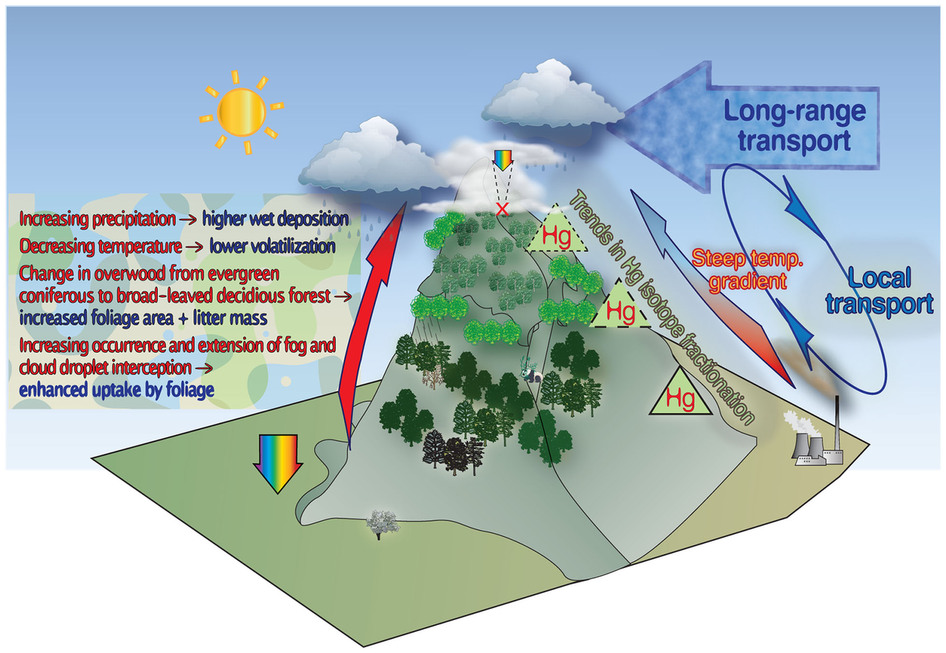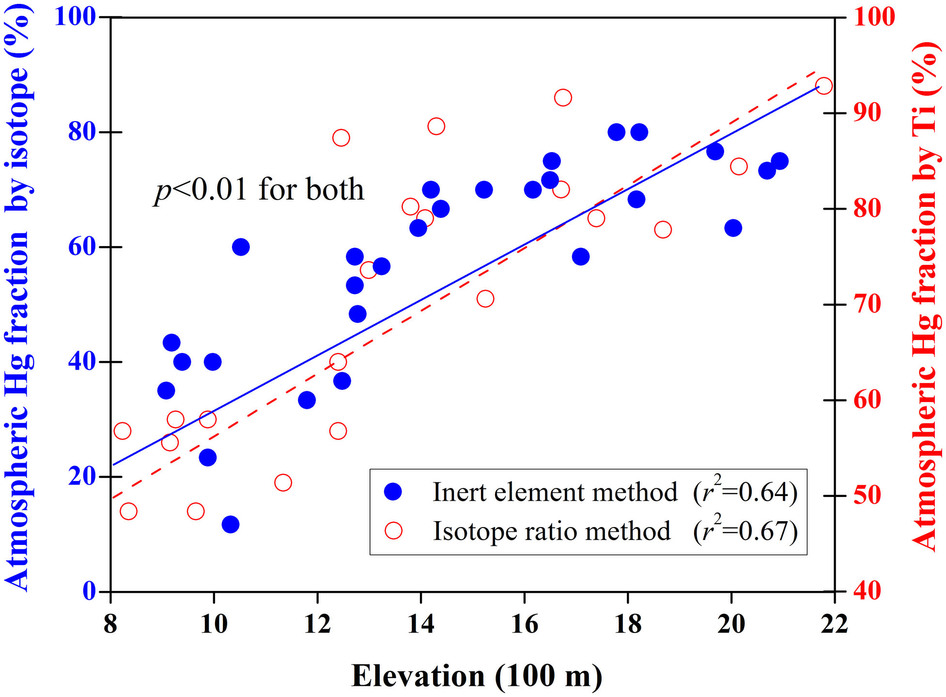A study by ZHANG Hua from the Institute of Geochemistry, Chinese Academy of Sciences (IGCAS) and his collaborators discovers that mountainous regions may act as regional convergence zones for atmospheric mercury, analogous to classes of organic persistent pollutants.
The researchers analyzed the Hg species and their corresponding isotope composition in topsoil sampled along an elevational gradient transect on Mt. Leigong in subtropical southwestern China. The total mercury and methylmercury in topsoil samples both showed a positive correlation with elevation. However, a negative elevation dependence was observed in the mass-dependent fractionation (MDF) and mass-independent fractionation (MIF) signatures of Hg isotopes. The Hg isotope signatures and inert element tracers were used to identify and quantify the Hg sources. Both methods demonstrated a very similar trend and revealed a significant atmospheric fractionation (80%) at high elevations, with less than 40% in the foothills. Their results indicated that there was an altitudinal magnification effect (i.e., ‘mountain trapping effect’) on atmospheric Hg inputs in montane soils.
This study, for the first time, demonstrates that a ‘mountain trapping effect’ of semi-volatile Hg can occurs in montane environments and provides a systematic discussion of the possible mechanisms (Figure 1). The observations infer that previous studies on regional or global Hg cycles/distribution may have significantly underestimated the Hg mass trapped by mountainous regions, as mountains account for a significant proportion of the global terrestrial area.
The study was published in Scientific Reports, a NPG’s new journal (Zhang H. et al. Atmospheric mercury inputs in montane soils increase with elevation: evidence from mercury isotope signatures. Sci. Rep. 3, 3322; DOI:10.1038/srep03322 (2013)).
PDF version of the article
 |
|
Figure1.Illustration of potential mechanisms for “Mountain Trapping Effect” of Hg in montane soils (Image by IGCAS)
|
 |
| Figure2. Predicted fractional contribution (%) of atmospheric input to the soil THg level as a function of elevation using the isotope ratio method and the inert element method (Image by IGCAS) |